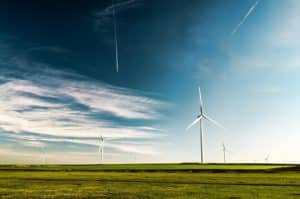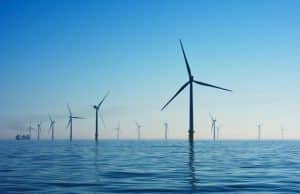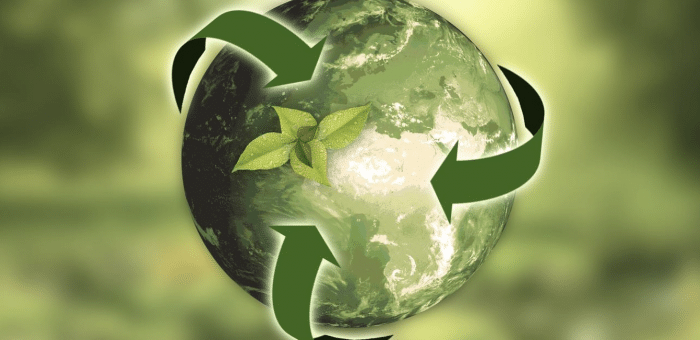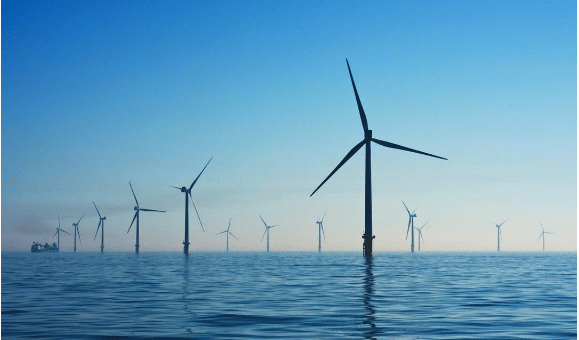As the conversation around climate change grows louder, and with buzzwords like carbon neutral, net zero, or even climate positive, we must become more informed on what it all means and understand the steps needed to protect our environment.
If you wonder, do the two terms — carbon neutral and net zero — refer to the same thing? You would be forgiven for mistaking this, as they seem to be used interchangeably by the politicians, businesses, scientists, and experts driving the climate conversation. In short, achieving net zero and carbon neutrality has the same result — removing harmful emissions from the earth’s atmosphere. But the scale and kind of emissions removed are different.

Carbon-neutral is the new gold. Nowadays, more and more companies pledge to become carbon-neutral, net-zero, or climate positive. However, the diversity of phrases and the lack of clarity around them can mislead well-intentioned consumers. With global giants like Google, who claim that they are the first company to eliminate its carbon legacy, we may ask ourselves: how is it possible?
Terms like “carbon neutrality”, “net-zero” or “climate positive” have been around for a while. And for the last couple of years, small startups to global corporations have taken steps to invest more and more into reducing the CO2 levels in the air. But the diversity of phrases and the lack of clarity around the different terms can mislead well-intentioned consumers. However, communicating transparently about them may encourage businesses and people to be more proactive.
Let’s break this down!
What is Carbon Neutrality?
Carbon neutrality means that the activities of a business or individual have no impact on global CO2 emissions. Individuals achieve this by minimizing their energy usage and creating green projects such as planting gardens or trees. Businesses that are carbon neutral are taking steps to remove an equivalent amount of CO2 that’s emitted through activities across their supply chains by investing in ‘carbon sinks’ that absorb CO2 .
Carbon sinks, such as forests or our oceans, absorb and store more carbon from the atmosphere than they emit. Investments into their health allows companies to operate in good conscience, knowing their emissions are balanced out.
However, it’s not just businesses that can strive for carbon neutrality — we can all make contributions as individuals. Making more sustainable lifestyle choices can help reduce each of our carbon footprints and limit our overall environmental impact. This could mean using public transport over a personal vehicle, limiting food waste, recycling packaging and old clothes, and monitoring the carbon intensity of your home’s power usage.
Of course, it can be challenging to keep track of CO2 emissions from everything in your household or business. If you’re interested in learning how much you emit, check out Power Wizard’s carbon footprint calculator. We’ll let you know your home’s carbon emissions and where there is most room for improvement.
Why you should lower your home’s carbon emissions
If you’ve watched the news in the last 20 years, you’ve heard of global warming and climate change. You might have also heard that we’re not doing enough to mitigate these things (which may be true) or that we’re already doomed (which may be false).
Still, as carbon dioxide emissions continue to rise, pressure is mounting on companies, governments, and individuals to contribute to the global effort. Progress is being made, but we’re still on track to increase our emissions in the coming years. If you can reach carbon neutrality, you’ll do more than earn bragging points; you’ll become living proof that tackling climate change is achievable. That starts with learning about carbon dioxide, where it comes from, and what it does.
What is carbon dioxide?
Carbon dioxide, or CO2 , is the gas that’s emitted when you burn things like trees and fossil fuels. This means that most activities requiring fuel contribute to global warming, even if only in a small way. Burning oil, coal, and natural gases are the primary things driving climate change today. But there are natural events that contribute as well, such as wildfires and volcanic activity. Additionally, animals such as cattle emit a fair amount of CO2 in addition to other greenhouse gases. This means that CO2 emissions have always been occurring throughout Earth’s history. However, the sheer amount of people using fossil fuels (and how they’re used) in the present day has increased net CO2 emissions.
Carbon dioxide is dangerous in large quantities because of its ability to trap heat. Every day, the sun shines light onto the Earth, which eventually radiates it back. CO2 , however, absorbs and re-releases heat in all directions. The direction of this heat is evenly distributed, so about half of it returns to the Earth, along with new heat from the sun. The result is old and new heat trapped in the atmosphere together, just like how a greenhouse traps heat. This is why the phenomenon is called “the greenhouse effect,” and why gases like CO2 that make it possible are called “greenhouse gases.”
Too much CO2
A little bit of CO2 in the atmosphere is no big deal, as it could never capture all of the heat. In fact, the presence of CO2 is necessary for plant life to survive. However, humans have spent the last few hundred years digging for and burning the fossil fuels they can find. The result is a planet that has 50% more carbon dioxide than it ever has before. As more and more heat stays trapped in the Earth’s atmosphere, it becomes increasingly difficult for wildlife and vegetation to survive. Our dependency on these lifeforms for our own survival is what drives the international conversation about climate change and how we can turn things around.
It’s easy to find your home’s with Power Wizard’s carbon emissions calculator. Lowering your household’s carbon emissions is good for both the environment and your wallet, so get started with our calculator today to see how much you can save!
How does carbon dioxide affect the environment and human health?
Global Warming
The main effect of the lingering carbon dioxide in the atmosphere is the increase in global temperatures. While an increase of one or two degrees might not seem like a big deal, you have to remember that temperate regions — like much of the United States — rely on the changing of seasons. Animals, plants, and people (i.e. farmers, fishermen, etc.) time their activities around the seasons, and longer summers and shorter winters can make it difficult to produce all the food that we need.
Additionally, longer summers could mean more pollination, which should raise concern in those of us with seasonal allergies. In fact, air pollution, in general, is another nasty side effect of global warming. This includes wildfire debris, ground-level ozone, and the aforementioned seasonal allergens.

Sea levels rising (ice caps melting)
Another reason to be concerned about rising temperatures is that it reduces how long our planet’s arctic zones can remain cold. Polar bears have become sort of a poster child for global warming, and it’s not hard to see why. Even though they’re fine swimmers, they’re ultimately land animals, so they need some ice to rest on and hunt for prey. This is true for lots of polar wildlife.
The melting of the poles won’t just affect the poles, though. About 60% of all the freshwater in the world is held in the Antarctic Ice Sheet alone. Where does that water go when it melts? That’s right, straight into the ocean. When this happens, the sea floor doesn’t sink; the water level rises. Given enough time, this will affect every coastal region in the world. So that favorite beach of yours near you might not be there in a few decades. If that worries you, think of how people living in Los Angeles and New Orleans must feel.
The rising sea levels will have profound ecological, economic, and cultural consequences around the world, which is why it’s better to become carbon neutral now to start the changes that we need to repair the environment.
Temperatures rising
This might be the most obvious thing to come from “global warming,” but what isn’t obvious is just how many aspects of daily life this will affect. Here are a few examples:
- Hydration: Some people live in hot, dry regions that are susceptible to droughts. Yet, even in these conditions, people need access to water. Imagine how much worse it will be for these people when temperatures are higher and droughts are more extreme; they’ll need access to water that may not be there and may never come.
- Plant life: Lots of plants, including grass, instinctively grow in warm conditions and recoil in cold conditions. What happens when it randomly gets warm in January, and they get slammed by a blizzard a few days later? Their growth cycles are disrupted, leaving the future of plants uncertain.
- Animal life: Similarly, many animals rely on these plants for nutrition. This disruption of the food chain is part of the reason some scientists are expecting a mass extinction.
- Energy: Even humans are built to live under certain conditions. But when we need to have A/C on more often, energy usage will rise along with costs. Since excessive energy use is part of what caused global warming in the first place, climate change can only be expected to worsen because of it.
- Snowfall: It doesn’t snow if it’s not cold enough. Snow helps the Earth regulate its temperature and keeps tree roots hydrated during the cold dry months, and when it melts, it fills our rivers and lakes. Less snow means less trees and water.
- Wildfires: When conditions are hotter and drier, it’s easier to start fires. They’re also more likely to spread faster, which means the lightning bolt that struck a tree could do more damage than it would a few decades ago.
Tropical storms and hurricanes
If you live in a state like Texas or Louisiana, you’ve noticed an increase in notable hurricanes and tropical storms over the last 20 years. This is because these storms rely on warm weather to form and maintain strength. Now that temperatures are higher, there’s bound to be more moisture in the air, so it’s easier for a storm like Harvey to materialize.
Furthermore, the amount of rainfall produced by these storms is predicted to increase. Remember the melting ice caps and their effect on coastlines and islands? Now add regularly occurring intense rainfall to the mix and see how much tougher it is for people in these areas to maintain their homes and businesses.

How to reduce your carbon footprint
Knowing the effects of climate change, it’s understandable to be at least a little anxious. However, the good news is that there’s still time to cut back on CO2 emissions and become carbon neutral. So how do we do this? Simple: remove one unit of CO2 from the atmosphere for every one you emit. For example:
If you emit 100 tons of carbon dioxide, you remove 100 tons of carbon dioxide to neutralize your emissions.
In short, being carbon neutral means that you invest in carbon reducing projects to cancel out your own daily emissions. There are two ways to bring your total emissions down:
- Emit less CO2. This is the simplest way to reach carbon neutrality, and there are many clear and achievable ways to do this. One way is to carpool to work, which requires only one car instead of two.
- Remove CO2 from the atmosphere. This one is a bit tougher, especially if you live in a city, but it’s still doable. While you might not be able to build the technology to capture and store carbon, you can still plant a tree somewhere, which removes CO2 as nature intended.
Generally, removing CO2 is a bit harder than simply not emitting it in the first place. That’s why your first step in becoming carbon neutral should be to cut personal emissions whenever and wherever you can. Power Wizard can help you by identifying where you can cut your emissions and setting you up with an energy plan that saves you even more. Visit Power Wizard today and see what else we can do for you.
Other ways to reduce your carbon footprint
Just about everyone can look at their lives and learn how to reduce their personal carbon emissions. Let’s take a look at some of your options.
Plant a tree in your backyard to provide shade and absorb carbon dioxide
Why is planting trees the usual solution to global warming? Because they rely on CO2 for survival. Photosynthesis is the process of a plant taking in water and CO2 and turning them into the nutrients it needs. Specifically, water becomes oxygen, and CO2 becomes a sugar called glucose. Because trees act as natural CO2 sinks, planting them is a great way to remove CO2 from the air.
While trees are the best thing you can plant for this purpose because of their size, if you only have so much space, any green thing you plant can do some good. Starting a garden could provide you with your own food source while removing CO2—a win-win situation.
If you can plant a tree in your yard, place it where it might provide some shade. You could buy a tent instead, but remember that anything manufactured requires energy, so natural solutions are always better. Just make sure it doesn’t block your solar panels!
Ride your bike to work or school instead of driving
The transportation sector is the biggest culprit in climate change. Most trucks, planes, and ships rely on fossil fuels, but cars get the most attention because so many people use them. In densely packed cities where people are prone to getting stuck in traffic, the problem gets worse.
We’ve mentioned how carpooling could knock your personal emissions down a notch, but if you want to eliminate CO2 from your travels altogether, see if you can take a bike where you need to go. Many benefits come to mind, such as:
- End your reliance on fuel to get around
- Save costs on gasoline and tolls
- Squeeze some exercise into your daily routine
- Avoid traffic jams and reach your destination sooner
If cycling isn’t an option for you, public transport could be. Check your local bus, train, and subway routes and see if there’s a station near you. Or, you can lower your home’s emissions with Power Wizard. It’s easy to calculate your home’s emissions and start lowering today!
Shut off electronics when you’re not using them — unplug chargers, too
If transportation is number one in fossil fuel consumption, then electricity is number two. When you think about how much we rely on it in every part of our lives, you can start to see why. Furthermore, some people have noticed an increase in their electricity bills lately, spurning financial motivation.
The easiest solution? Shut them off until you need them. This includes lights, electronics, air conditioning, and heating. Keep in mind that chargers use electricity while they’re plugged in, so it’s best to unplug them when not in use. On that note, try to put electronics like computers and smartphones into sleep mode when you’re not actively using them so that they don’t need to be charged as often.
Wash your clothes in cold water whenever possible
As it turns out, cold water is about as effective as hot water when it comes to washing your clothes. If you’re trying to get a stain out, the temperature of the water you use is usually meaningless. By opting not to heat your water, you’ll use less electricity, which means fewer CO2 emissions and a lower energy bill.
That being said, this isn’t something you should do all the time. Some fabrics don’t do so well when washed with cold water, and some detergents won’t be as effective. Furthermore, hot water is better when there’s a sick person in your household, as it’s more suitable for killing germs. Overall, switching to cold washing could save you money and lower your carbon output.
Take shorter showers (or invest in a low-flow shower head)
We all love to take long, hot showers, but people tend to underestimate how much energy is needed to keep that water hot. When you use hot water, you need more energy to heat the water that remains. There are two solutions: take shorter showers ( five minutes is recommended), and/or get a shower head that reduces how much water comes out.
You might have noticed a trend here: a lot of these solutions are financially beneficial to the user. Energy is a paid service, and by using less, you pay less. In the case of water usage, you also reduce your water bill. Becoming carbon neutral isn’t just about absorbing CO2; a lot of it is simply consuming less. When you think of it this way, doing your part becomes much more achievable. Another way to reduce your home’s emissions is by joining Power Wizard! We help you calculate and then reduce your home’s emissions.
Avoid single-use plastic
Many industries rely on single-use plastic to wrap and ship their products because it’s usually the cheapest option. Some even make their products out of single-use plastic, like the popular single-use toothpick flossers. Unfortunately, there’s nothing you can do with plastic once it’s used except discard it. Best case scenario, it ends up in a landfill that does nothing but take up space that could be used to plant a forest or act as a solar farm. Worst case scenario, it finds its way into some poor animal’s stomach or our oceans.
You can help by being selective in what you purchase. Instead of a bottle of soda, get a can instead. At least the aluminum is recyclable. At the same time, look for products that advertise their eco-friendly containers. By putting financial pressure on industries that use unnecessary plastic, you give them the incentive to switch to eco-friendly options. Also, for water, always use a reusable bottle.
By the same token, bring your own reusable bag when you go shopping. These bags are stronger than the cheaper single-use plastic bags and eliminate the waste.
Recycle and compost as much as you can
On the topic of recycling, this is another way to reduce your emissions. As stated before, many industries use nonrenewable energy to churn out new products. By using items made from recyclable materials, you set some of them aside to be made into something else. For example, paper products like toilet paper rolls can be used to make more paper items. When you recycle paper instead of cutting down trees, you give the manufacturer more material to work with and you reduce the number of trees that need to be cut down. We need to save and maintain as many trees as possible because they give us oxygen we need while also absorbing CO2 from our atmosphere.
Another form of recycling is composting. This is often overlooked, but it’s the most natural way of recycling that exists. When organic material stops receiving nutrients, it dies, then decomposes. However, they still contain valuable nutrients. Thus, nature breaks them down for future use, AKA recycling. The result is mulch that you can use to grow plants of your own, including fruits, flowers, and CO2-loving trees. Examples of compostable materials are banana peels, nut shells, and even dust and hair! Of course, not every organic item is good for composting, so do some research first.

Thrift for clothing
The clothing industry, in particular, is a huge contributor to climate change. In addition to being responsible for about 10% of all CO2 emissions, it also produces a high amount of plastic in the form of polyester. To top all that off, it also has a poor recycling record, with only 13% being recycled and the rest incinerated or stuffed in a landfill, producing a lot of waste and using land that could’ve been used to produce a necessity, like food. instead.
What can you do to help? Instead of buying new items, get your next set of clothes from a thrift store instead. These stores sell donated pieces and are often run by charities. When you’re done with them, give them back to the thrift store (assuming they’re still wearable). Considering how much clothing waste hurts the planet, relying on thrift stores is an easy and fashionable way to reach carbon neutrality. Plus, you’ll save some money as well.
Switch to electric vehicles
Some people are fortunate enough to live in an area with excellent walkability or public transport. Others need to be able to drive or run a business that relies on vehicles. If this is your situation, you can still slash your emissions by switching to a hybrid or, better yet, fully electric vehicle.
While using electricity still emits a little CO2, it’s much better than burning fossil fuels on your commute every day. While electric vehicles and their batteries can have a high upfront cost, they’re often easier and cheaper to maintain once you have them. This is because of their simpler design, meaning fewer parts to replace, and their lack of reliance on routine maintenance. They can also be charged at home, making them extra convenient for daily use.
If the upfront cost of an electric vehicle is too high, you can also look at hybrids. Since they use gas, you can fuel them up at your standard gas station while the electric motor and battery supplement the vehicle’s power. Because the gas you use goes farther, you consume less of it.
Each option has its pros and cons, so before you buy your next vehicle, consider your options, explore tax credit incentives, and decide which best suits your needs.
Reduce dairy and meat consumption
While you might sometimes hear how going vegan is good for the environment, the reasons may not be apparent at first. The meat and dairy industries emit a fair amount of CO2 to fuel their transportation and machinery, but there are other factors at work as well.
- Land use: Livestock, particularly cattle, need a large area to roam and graze. If it’s not available at first, forests may be cut down to make space. As we’ve established, forests are good.
- Feed consumption: Farm animals eat a lot, and a lot of that food could instead feed us. In fact, 70% of the grain grown in the US feeds livestock instead of humans.
- Soil and air pollution: Because they eat so much grass, livestock can strip the land bare. Furthermore, they also release a lot of methane, which is another major greenhouse gas that doesn’t do our planet any favors when emitted in excess.
Choosing one type of food over the other at the supermarket might not seem like a planet-saving decision, but the process of raising livestock for slaughter uses a lot of land and resources. Going vegan is a good way to become carbon neutral since plant-based foods are a lot easier to raise, require less space, and actually consume CO2 while growing. Eat local foods whenever possible as you’ll support your community while cutting transport emissions.
Choose an optimal electric plan
Finally, there’s the matter of your electricity plan. When you look at it, you might find that it’s too expensive or that you’re paying for services you don’t use. Your move toward carbon neutrality is the perfect time to shop around for better options. Unfortunately, there are so many options out there, each claiming to be the best, that you find yourself overloaded with information, statistics, and sales pitches.
To cut through the nonsense and find the perfect electricity plan for you, get help from a company that empowers you to make knowledgeable, informed decisions. In Texas, for example, you can enlist the help of Power Wizard, which gives you a range of options depending on your needs. Our shopping tool finds the best electric plans for you from a wide range of electricity providers so that you can view them all in one place. We’ll even call the power company for you and pick out a new plan when your contract expires. You give us the go, and we’ll handle the rest!
When making the switch to cleaner electricity, there’s a lot of information to sift through. If time and money are your concerns, don’t hesitate to give Power Wizard a call, and see how much you can save with us.

What are the benefits of reducing carbon in the atmosphere?
Climate change affects so many things in so many ways. It’s easy to take things like clean water for granted until you no longer have it. As the situation is only getting worse, the best way to protect what we have is to act now. Let’s zoom in and see how cutting our carbon emissions affect each aspect of our lives.
Environmental benefits
Carbon emissions are dangerous because they threaten to change how the world itself works. If emissions are slowed, we can maintain the status quo and maintain our way of life.
Slowdown of global warming
Even though global warming continues to get worse, it’s getting worse at a slower rate thanks to international efforts like the Paris Agreement. The hope is that, if we become carbon neutral before the global temperature increases by 1.5 degrees Celsius, the world’s systems will stabilize. It will be hotter than it was pre-industrialization.
However, this is an ambitious goal, and our current efforts aren’t enough. This is why everyone needs to step up and do what they can to cut their personal emissions. You can reduce your home’s emissions with Power Wizard! Let us help you calculate your home’s emissions and start lowering them today!
Wildlife conservation
Our planet is home to countless animal and plant species, and almost any corner of it is bound to have a vast diversity. This includes our seas, forests, and arctic poles. Sadly, climate change is a threat to biodiversity (the number of live species in the world). Increased temperatures melt the ice caps, wildfires rage through forests, and storms disrupt our coasts and the species living there. Furthermore, higher temperatures make it tougher for some plant species to survive.
People rely on plants and animals for more than they might at first think, including agriculture and medicine. However, one change can disrupt an entire ecosystem, one example being an increase in toxic algae. By becoming carbon neutral, you can reduce the rate at which these changes occur, giving wildlife more time to adapt.
Fewer big storms
Large storms such as hurricanes have always been around, particularly in warm coastal regions like the Gulf of Mexico. However, there’s no denying how much worse these storms have become. In 2022, Hurricane Ian did over 50 billion dollars worth of damage, a cost second only to Katrina. That’s to say nothing of how much damage it did to the environment.
Fighting climate change is everyone’s responsibility, but if you live in a hurricane-prone area, you have a personal stake in the game. By limiting your carbon emissions, you limit how much hotter the world gets and how easily these disastrous storms can form.
Health benefits
It should come as no surprise that the human body benefits from fewer chemicals in the air. But global warming’s reach goes beyond that. To understand how our health will benefit by cutting CO2 emissions, let’s look at the big picture.
Clean air
Inevitably, a warmer climate will affect the air we breathe. Remember how plants absorb CO2? That applies to allergens such as ragweed, too. It’s not just the carbon that contaminates the air, however; some infectious diseases are known to thrive in warmer conditions. On top of that, the ash and clouds of smoke from wildfires are another result of climate change.
When the quality, temperature, and chemical makeup of the air change, living conditions change as well. New things, like germs, can thrive, while the area becomes harder to inhabit for those living there already. Thus, improving your carbon footprint will help to control this change and keep the air from becoming too toxic.
Pure water
By the same token, warmer temperatures allow toxic things to grow in water as well. Certain types of toxic algae bloom more in warm waters, making it unhealthy to drink. Since the warmer climate causes more water to evaporate, these toxins take up that much more valuable space, making the water that much more dangerous.
Now imagine this contaminated water evaporating and becoming part of a hurricane. Once the flooding starts, our water treatment systems will encounter far more of these toxins than they can treat.
Nobody can live without water, and water is becoming increasingly scarce. Protecting our seas, rivers, and lakes is one of the most important reasons to reduce your carbon footprint. By going carbon neutral and inspiring others to do the same, your efforts can impact your community.

Healthy food
Global warming affects our food as well as our water. Remember the toxic algae? Well, it’s even worse for the fish that live in those waters, which have no choice but to endure it and suffer the consequences. When humans eat those fish, you can guess where those toxins end up — inside of us. The same can be said for any kind of livestock since all living things need to drink water to survive.
Meat aside, even plants are affected by increasing carbon levels, and not just because they require water to grow. Plants grow by absorbing CO2, but this doesn’t mean that such high levels are good for them. They also depend on nitrogen, which is gained through the soil and promotes growth with added proteins and carbohydrates. If a crop consumes too much CO2 relative to nitrogen, then you’ll end up with a big, empty harvest that’s lacking in important vitamins and nutrients.
No matter what your dining preferences are, reducing carbon levels is good for you. If the yearly increase in temperature is slowed down, we can all enjoy healthy meals for centuries to come.
Improved mental health
This might come as a shock, but the changing climate and its implications for the future are negatively affecting people’s mental health. A walk out in nature is how many people cope with anxiety, but even nature itself is at risk.
If this sounds like you, becoming carbon neutral can help. You can’t reduce the world’s CO2 on your own, but you can begin making more climate-friendly choices at home. Smarter energy use can give you a financial cushion. Eating sustainable food can increase your physical and mental health (as long as you get all of your required vitamins and nutrients). Reducing your home’s carbon emissions might also reduce your anxiety about the future and your personal well-being.
Financial benefits
There’s a stigma around renewable energy that it’s hard to afford, but this isn’t true. On the contrary, you can save money by going green.
Lower energy bills
Nowadays, nothing is cheap, and to say that includes energy is an understatement. If you’re looking to cut back on your spending, becoming carbon-neutral is a good place to start. Whether it’s installing solar panels to gather energy for future use or something as simple as using less water, you’ll almost always find that making green choices is good for your wallet.
It’s understandable to be intimidated by the high startup cost of switching. Electric and hybrid cars are often far more expensive than traditional ones, and energy-efficient appliances can outprice their less green counterparts. When you look at the long term, however, these machines will save you far more money over the next several years. The sooner you can afford one, the more you’ll save in the end.
Remember, if the initial process is overwhelming, you can always give Power Wizard a call and let us consolidate your best options. We can give you a free quote for solar for your home. Start today to start saving!
Lower medical bills
As explained previously, climate change affects your health in several ways. The increased toxins and infectious diseases found in the land, water, and air are far from healthy. Considering the increased rarity of drinkable water and decreased nutrition from your meals, this leaves you suspectable to health conditions that you could normally fight off. If you suffer from asthma or a similar breathing impairment, then you may already be feeling climate change at work.
Keeping people healthy is good for society because our hospitals don’t have endless space. On top of that, healthcare is expensive in the United States, so improving the climate situation can save you a lot of money in the long run.
More efficient energy
Getting energy from renewable sources is important, but so is using it effectively. No matter where it comes from, it’s not something you want to waste. A few energy-saving items have been mentioned already, such as appliances that use less energy to operate, low-flow shower heads that save water, and solar panels that gather energy from the sun itself. By using these things, you not only save money and reduce your home’s carbon emissions but you also reduce the pressure on aging and overworked power grids. Since everyone depends on them for power, anything you can do to ease their burden helps.

Government incentives
If your government is serious about fulfilling its climate pledge, then it will do everything it can to make clean energy the best option. In the US, for instance, buying an electric car can net you a tax credit under certain conditions. Depending on where you live, similar tax breaks might exist for solar panels, heat pumps, and other green technologies.
You could also invest in renewable energy credits and carbon credits. The former can be purchased along with green energy, and the latter is bought to make up for carbon emissions you can’t eliminate. The money involved in both goes to fund climate-friendly programs and technology.
Be part of a global movement
This world has a lot of nations and cultures with substantial differences to navigate and/or overcome. However, one positive to come out of the climate crisis is that most of these countries have come together for a shared interest. This alone is a reason to become carbon neutral.
If you own a business, people around the world are more likely to work with you if you’re making an effort to reduce your emissions. On a personal level, being part of a worldwide effort connects you with like-minded people, welcoming you into a community that will help you achieve your climate goals. It’s rare to see so many people around the world working toward a common goal, so take full advantage of it!
Reducing your carbon footprint at home
Part of the reason carbon emissions have spun out of control is because of the sheer number of people in the world today. Any effort to cut your emissions might seem small, but there are personal benefits as well. Plus, it’s not as hard as people think, especially if you have Power Wizard on your side. Here are a few suggestions to get you started:
Insulate your home
Energy costs can be quite high during the cold months due to increased heating, so this is an area with lots of room for improvement. That being said, you shouldn’t have to shiver through the winter as a result. Instead of generating more heat, keep the heat you already have by insulating your home. There’s a good chance your home is already insulated, but it could be lacking in areas or starting to show its age. Each autumn, check your home to make sure that it’s properly insulated so that heating it is less of a hassle when it matters most.
Switch to renewable energy
You don’t have to rely on the power company to supply your energy. There are several ways for you to create your own using natural and renewable resources. For example, by installing solar panels on your roof, you can absorb the sun’s rays directly, and with the right equipment, save it for future use. Of course, this requires direct access to the sun and is impeded by shade, so this won’t work with every home.
If you have the space, you could also try installing a wind turbine, turning the wind into power. But again, how much mileage you get from this depends on how your property is set up. There are other ways to gather energy from renewable sources, such as solar ovens, hydropower, and solar water heating.
Even if you can’t fully power your home with the energy you collect, you can cut down your home’s carbon emissions and energy bill at the same time. To learn which methods are best for your home or business, reach out to Power Wizard! Our tools and databases are designed to maximize your savings and minimize your emissions by helping you find the energy plan that best suits you.
Buy energy-efficient appliances
This route might be intimidating for some people because it can be hard to tell which products are more efficient than others. On the shelf, they all look the same. If you’re looking for an easy way to pick out the most environmentally friendly options, keep an eye out for ENERGY STAR‘s logo. ENERGY STAR is a program by the EPA (Environmental Protection Agency) that labels the most energy-efficient products on the market with its signature blue star. If you see this star attached to a product, it’s energy efficient. Regardless of the upfront price, you’ll save money in the long run and reach carbon neutrality that much faster.
Use less water
Not every effort to become carbon neutral requires an expensive purchase or a major home renovation. Sometimes, you just need to watch how much you use. We’ve talked about the energy cost associated with using a lot of warm water, but cold water isn’t something you should waste either. Saving water requires just a few simple habit changes. For instance, don’t let the sink faucet run unless you’re actively using it.
Even though we just said this can be done without purchasing anything (and it can), you can still invest in products that help cut down your water bill. We’ve mentioned a few of them already, such as low-flow shower heads and energy-efficient appliances. Though these are fantastic ways to reduce your water usage, simply taking shorter showers is a great place to start!
Buy local food
If you see something on the shelf that wasn’t made locally, it had to be transported there, almost certainly by an energy-consuming vehicle. Furthermore, if it’s a mass-produced item, a lot of energy was used to make it and get it there. Instead of this corporate product, support your community by buying locally-grown food. With minimal shipping costs and more sustainable growing methods, eating more local food benefits everyone.
Does this mean you should stop supporting small farmers that are a few towns over? Of course not! They’re definitely the better option over international chains. Still, take note of any farms in your area and offer them your business so that they can keep doing what they’re doing.
This isn’t a hard-and-fast rule, as there are some shady farms and eco-friendly chain stores out there. Still, there are energy costs with transporting food across the country that your local farm doesn’t have. You can never be 100% sure, but when in doubt, buy local!

Reducing your carbon footprint at work
While reduction in your home’s carbon emissions is good, the truth is that large companies are mostly to blame for the crisis we face. In fact, multinational corporations emit almost a fifth of all the CO2 in the atmosphere, and just 100 companies are responsible for 71% of all emissions since 1988. If these businesses don’t change their ways, stopping global warming is going to be much, much harder. If you’re serious about fighting climate change, you can advocate for your workplace to become carbon neutral. It might seem like a tall order, but here are some things you can do:
Educate yourself and your coworkers about the benefits of carbon neutrality
As you can see, a lot is going on regarding the climate crisis, and no headline or buzzword can properly convey the whole story. It’s, therefore, easy to understand why people jump to conclusions or just tune it all out. However, even a complicated subject becomes manageable when people are willing to sit down and educate each other.
Conversations with coworkers are a great place to start this process. When talking to someone skeptical of the problem’s existence, compare current events to those of a few decades ago, such as the number of forest fires or hurricanes. While educating others, stay up to date by following scientific breakthroughs and discoveries. Always keep an eye open for ways to bring your company closer to carbon neutrality.
Advocate for green policies and initiatives within your company
Once you’ve grouped up with some coworkers, you can begin to make positive changes in your company. One thing you have to keep in mind is that businesses exist to make a profit. A lot of companies use nonrenewable energy and resources because they believe it to be the cheapest or most efficient option.
It might fall on you to show them why becoming carbon neutral benefits everyone. With all of the energy credits, tax credits, and affordable options available, going green isn’t as expensive as it used to be. Furthermore, more people than ever are specifically looking for green companies to do business with, and a good reputation never hurts the bottom line.
You don’t have to unload everything at one meeting, however. Instead, look for daily problems that can be fixed by clean policies. Old company car breaks down? Advocate for an easier-to-use electric car. Energy bill going up? Maybe some solar panels would help. Improve your company step-by-step, and you’ll see significant progress over time.
Reduce your own office’s energy consumption
If you want to help fight climate change, your workplace is one of the best places to start. Everything we’ve talked about so far helps: use less water, turn off lights when you leave a room, buy lunch locally, etc. Solutions specific to your workplace, though, will depend on what exactly your company does.
If you work in an office, for example, you’ll probably have machinery that might not exist in your home, such as a paper shredder or photocopier. You could replace these machines with more energy-efficient versions. Keep track of how much paper and ink you use and see if there are more sustainable options, such as vegetable-based ink. You might not have the last word in implementing these items, but you can make your personal workspace as green as possible. If you start leading by example, the rest of the company may follow.
Choose environmentally friendly transportation options
Remember that transportation is the sector that emits the most carbon dioxide. Whether you work at a pizzeria or a limousine service, any improvement you can make to your workplace’s modes of transport is sure to take its emissions down a notch. Pitch this to your boss, along with the long-term savings from going electric, and they might see things your way.
This doesn’t just apply to your daily life, but to any business trips you may attend. If you’re offered the company car, volunteer to take the train instead. If taking to the air, take note of Google Flights’ carbon emissions estimate. The more traveling your company does, the more room there is for improvement in the transportation category.
Work from home to reduce fossil fuel emissions
Better yet, stay home and emit no fossil fuels at all! The COVID-19 pandemic necessitated working from home, but now that it’s winding down, many businesses continue to reap the benefits of telecommuting. The ability to work from home and avoid the daily commute is part of the reason why carbon emissions took a nosedive in 2020.
If you want your company to adopt a work-from-home policy, here are some things you should pitch to your employer:
- Increased productivity working from home compared to an office
- Fostering employee happiness and loyalty
- Keeping up with an international trend
- The goodwill that comes with approaching carbon neutrality
Some jobs will never be able to be worked from home, such as certain customer service positions. However, lots of jobs can be performed with only a computer and/or a phone. Since you likely have both in your home, why should you have to drive an hour to work and emit more CO2? Just be polite, diplomatic, and informative, and there’s a chance your employer will agree.
Purchase RECs (Renewable Energy Credits)
Some of these options might seem beyond what your budget allows. Money is increasingly tight, and not everyone can afford the same luxuries. However, the US government recognizes that fighting climate change is something that requires everyone’s cooperation. To this end, they’ve created their own motivation in the form of renewable energy credits, or RECs. When you get energy from a renewable source such as wind or solar, you might have the option to purchase one REC for each MWh (megawatt) of electricity generated.
There are a few reasons to buy RECs. For starters, climate change is on everyone’s mind nowadays, and companies are increasingly motivated to lower carbon emissions. Thus, having some RECs is a great look that will make people feel good about doing business with you. The main draw, however, is the ability to use RECs to fund other climate-friendly projects at your company, such as the installation of solar panels. Then, you can become more climate-friendly.
Ultimately, any business that struggles to fund carbon solutions should consider buying some RECs. Power Wizard can help you decide on the best way to use them that reduces your carbon footprint and benefits your business!
Purchase carbon credits to make up for emissions you can’t reduce
Sometimes, even after you’ve looked at every part of your workplace and made every possible change you can, you’ll find that you’ll need to continue relying on fossil fuels to some extent. Even if this is the case, you can still turn it into a positive by purchasing carbon credits. They’re similar to RECs, but they act more like “permission slips,” and the cost of purchasing them is often reinvested into green projects. Buy enough of them, and you can lower your home’s carbon emissions!
There are a few caveats. On one hand, they might not be available in your area. On the other hand, there’s a chance that they may be compulsory in regions where you do business! Whenever you start a new company or expand to somewhere new, always check the carbon regulation laws to see what you can do — and what you need to do.
Before resorting to carbon credits, you should be absolutely sure that there’s no way to reduce your emissions any further. That’s why Power Wizard is essential for tracking your home’s carbon emissions and bringing them down as far as they can go.
Spread the word about carbon neutrality and how easy it is to achieve!
As you can see, there are many, many ways to improve your carbon footprint, both at home and on the job. On the flip side, the sheer amount of information people think they have to sift through to become carbon neutral can be intimidating, causing action paralysis. Now that you’re educated on the subject, you can take the first steps to achieve carbon neutrality. Once you have a system down, spread the word to your friends, family, and coworkers. Help each other out, give each other advice, and reap the personal and environmental benefits of carbon reduction!
If you or anyone you know is struggling to start working toward lowering your home’s carbon emissions, remember that Power Wizard is here to make it easy. Our plans are tailored to each individual client, so anyone that reaches out has our full attention and support. Let your entire network know that Power Wizard is here for them!

Begin your path to lowering your home’s carbon emissions today
Climate change is a massive, complicated issue that the world’s top scientists are still trying to fully understand, so nobody can be blamed for being confused or having questions. Hopefully, this article made things easier to understand by highlighting the root of the problem, how it affects everyone, and what you can do to help fix it.
Global warming is getting worse. Therefore, the sooner you start lowering your home’s carbon emissions, the more you can help the international effort and reap the rewards of clean energy.
Since there’s a lot to process and a lot of changes to make, you should start your journey with Power Wizard at your side. Choosing a new power plan and vetting every power company can eat up a lot of your precious time. With Power Wizard’s tools, you can cut through the clutter and choose a power plan that’s fairly priced, climate-friendly, and compatible with your needs. Use our database to search for a plan or let us set you up ourselves — the choice is yours.
Climate change isn’t waiting around, so why should you? See how much Power Wizard can help you and start lowering your home’s carbon emissions today!


